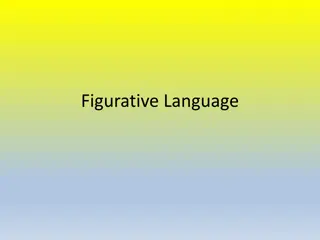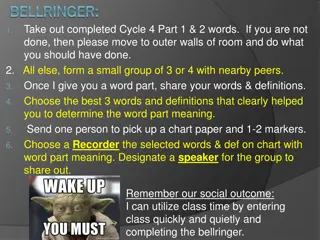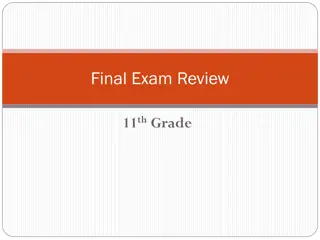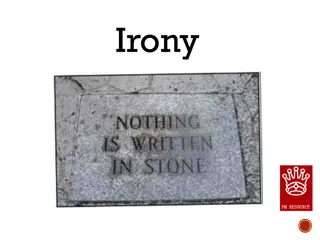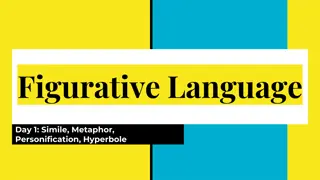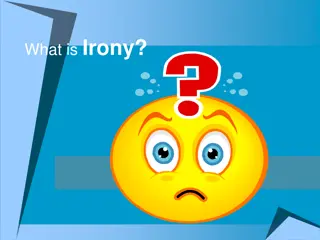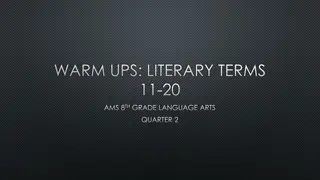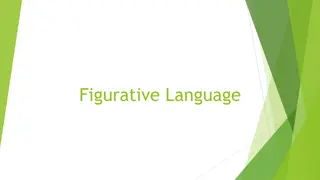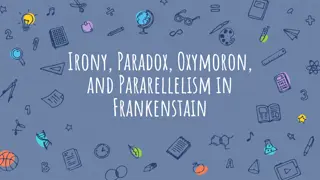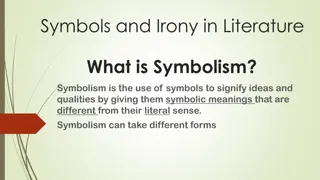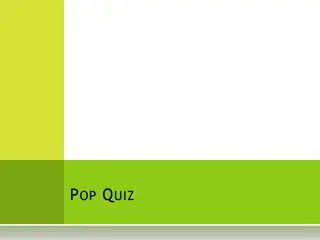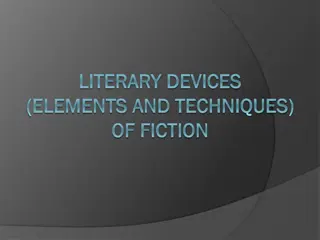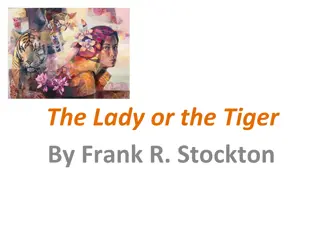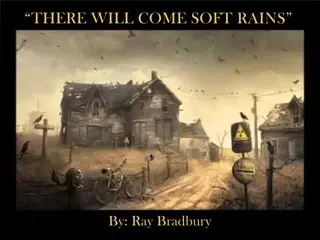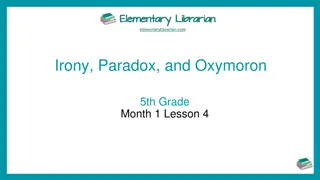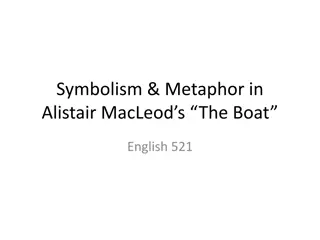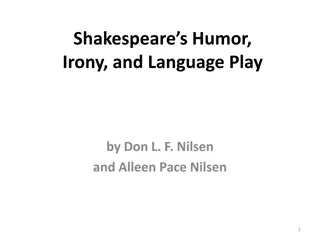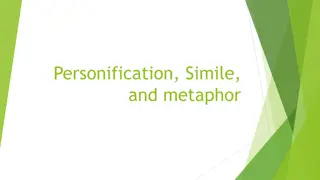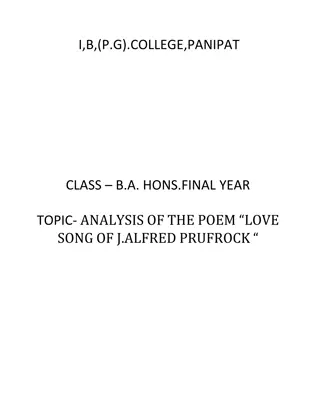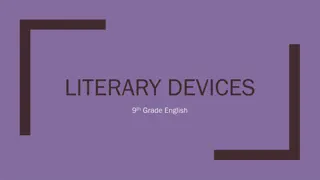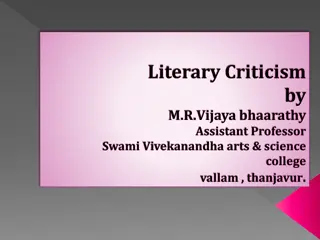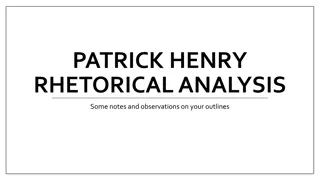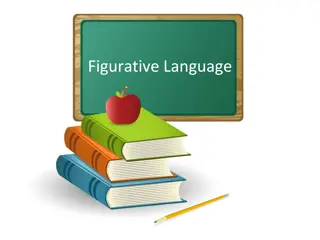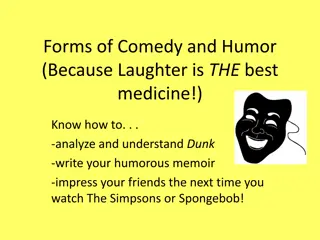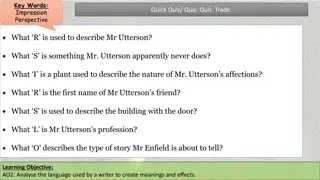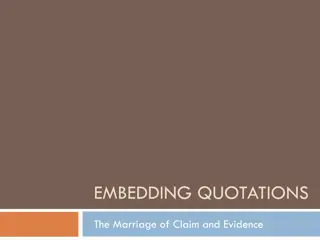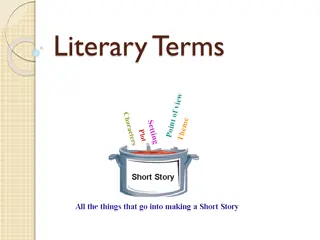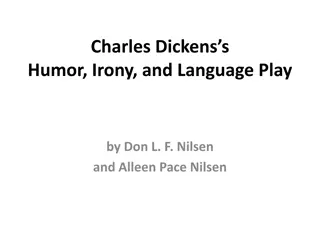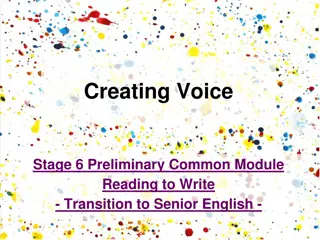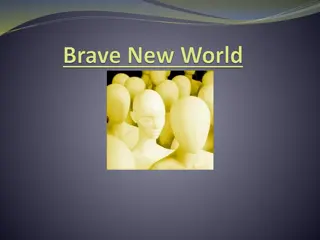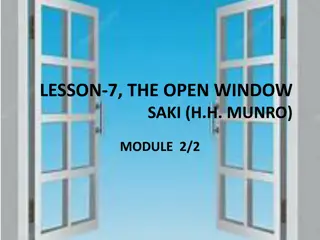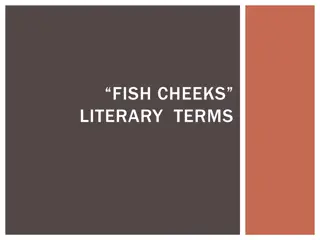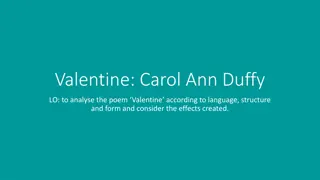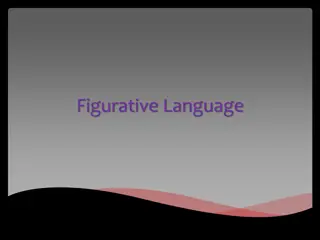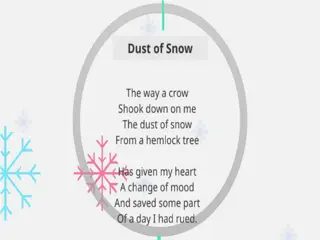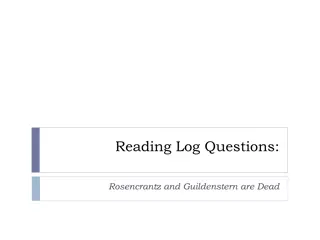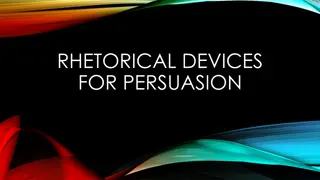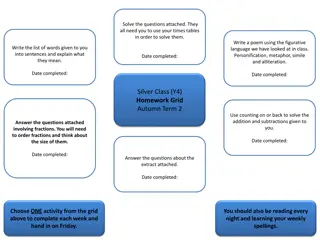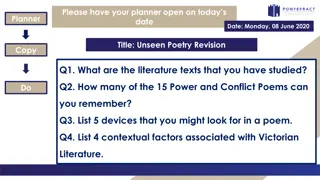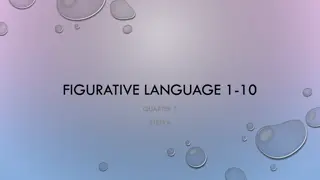Understanding Literary Devices: Allusion, Foil, Hyperbole, Idiom, Irony, Metaphor
Explore key literary terms including allusion, foil, hyperbole, idiom, irony, and metaphor. Learn how these devices enhance storytelling by creating depth, contrast, exaggeration, cultural nuances, and symbolic meaning within literature.
Download Presentation

Please find below an Image/Link to download the presentation.
The content on the website is provided AS IS for your information and personal use only. It may not be sold, licensed, or shared on other websites without obtaining consent from the author. Download presentation by click this link. If you encounter any issues during the download, it is possible that the publisher has removed the file from their server.
E N D
Presentation Transcript
ALLUSION An allusion is a figure of speech whereby the author refers to a subject matter such as a place, event, or literary work by way of a passing reference. It is up to the reader to make a connection to the subject being mentioned. Example: It s no wonder everyone refers to Mary as another Mother Teresa in the making; she loves to help and care after people everywhere- from the streets to her own friends. In the example the author uses the mention of Mother Teresa to indicate the sort of qualities that Mary has.
FOIL A foil is another character in a story who contrasts with the main character, usually to highlight one of their attributes. Example: In the popular book series, Harry Potter, the character of Hogwarts principal Albus Dumbledore, who portrays good , is constantly shown to believe in the power of true love (of all forms and types) and is portrayed as a strong, benevolent and positive character while the antagonist Lord Voldemort, who depicts the evil and bad in the series is constantly shown to mock and disbelieve the sentiment of love and think of it as a foolish indulgence, a trait that is finally his undoing.
HYPERBOLE A hyperbole is a literary device wherein the author uses specific words and phrases that exaggerate and overemphasize the basic meaning of the statement in order to produce a grander, more noticeable effect. The purpose of hyperbole is to create a larger-than-life effect and overly stress a specific point. Sentences usually convey an action or sentiment that is generally not practically/ realistically possible or plausible but helps emphasize an emotion. Example: I am so hungry I could eat a horse.
IDIOM A language, dialect, or style of speaking peculiar to a people. Example: People in the south say, Y all, Teenagers today say, lit.
IRONY The use of irony in literature refers to playing around with words such that the meaning implied by a sentence or word is actually different from the literal meaning. Often irony is used to suggest the stark contrast of the literal meaning being put forth. The deeper, real layer of significance is revealed not by the words themselves but the situation and the context in which they are placed. Example: Writing a sentence such as, Oh! What fine luck I have! . The sentence on the surface conveys that the speaker is happy with their luck but actually what they mean is that they are extremely unhappy and dissatisfied with their (bad) luck.
METAPHOR A metaphor refers to a meaning or identity ascribed to one subject by way of another. In a metaphor, one subject is implied to be another so as to draw a comparison between their similarities and shared traits. The first subject, which is the focus of the sentences is usually compared to the second subject, which is used to convey a degree of meaning that is used to characterize the first. The purpose of using a metaphor is to take an identity or concept that we understand clearly (second subject) and use it to better understand the lesser known element (the first subject). Example: Henry was a lion on the battlefield . This sentence suggests that Henry fought so valiantly and bravely that he embodied all the personality traits we attribute to the ferocious animal. This sentence implies immediately that Henry was courageous and fearless, much like the King of the Jungle.
ONOMATOPOEIA The term onomatopoeia refers to words whose very sound is very close to the sound they are meant to depict. In other words, it refers to sound words whose pronunciation to the actual sound they represent. Example: Words such as grunt, huff, buzz and snap
PUNS Puns are a very popular literary device wherein a word is used in a manner to suggest two or more possible meanings. This is generally done to the effect of creating humor or irony or wryness. Puns can also refer to words that suggest meanings of similar-sounding words. The trick is to make the reader have an ah! moment and discover 2 or more meanings. Example: A boiled egg every morning is hard to beat.
REPETITION Repetition is a literary device that repeats the same words or phrases a few times to make an idea clearer or more memorable. Example: Martin Luther King Jr. I Have a Dream Speech
SIMILIES Similes are one of the most commonly used literary devices; referring to the practice of drawing parallels or comparisons between two unrelated and dissimilar things, people, beings, places and concepts. By using similes a greater degree of meaning and understanding is attached to an otherwise simple sentence. The reader is able to better understand the sentiment the author wishes to convey. Similes are marked by the use of the words as or such as or like . Example: He is like a mouse in front of the teacher.
LOGOS Logos is an argument based on facts, evidence and reason. Using logos means appealing to the readers sense of what is logical. Example: It s a fact that smoking causes cancer. Therefore, if you don t want cancer, you shouldn t smoke. Appealing to LOGIC & REASON
PATHOS Pathos = argument based on feelings Using pathos means appealing to readers emotions and feelings. Example: If you don t buy this life insurance, you are letting your family down. Appealing to EMOTIONS
ETHOS Ethos is an argument based on character. Using ethos means the writer or speaker appeals to the audience s sense of ethical behavior. The writer or speaker presents him or herself to the audience as credible, trustworthy, honest and ethical. Example: As a doctor, I can say that this product will certainly improve your health. Appealing to AUTHORITY & CREDIBILITY


